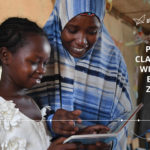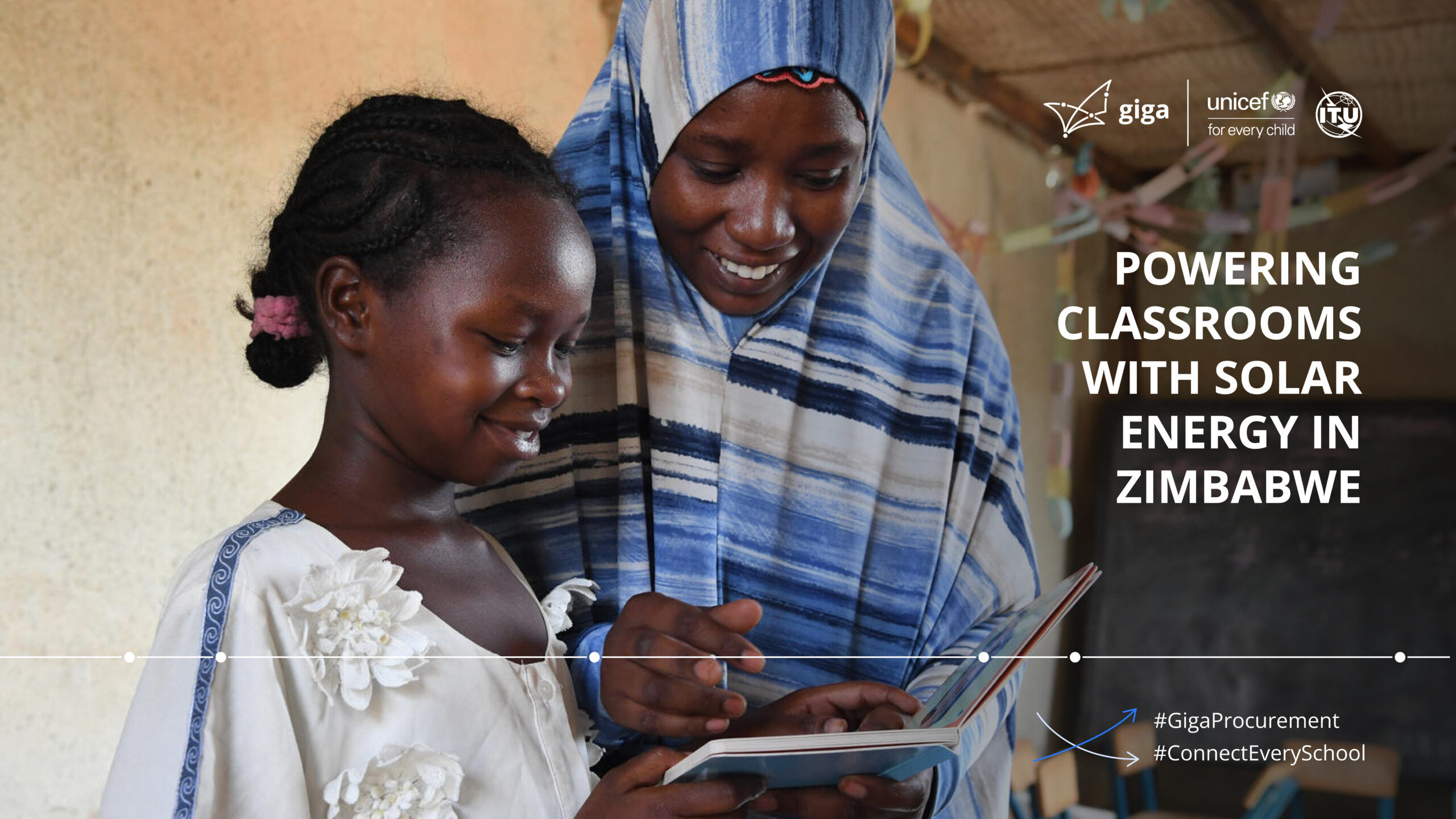Some 60 percent of Zimbabwe’s schools cannot access reliable electricity and this might once have prevented them from connecting to the internet.
But – with UNICEF technical support and expertise – the Government of Zimbabwe has been finding ways to procure solar power for the schools, connecting them to the internet and unlocking new opportunities for teaching, learning, and community development.
Globally, about 50 percent of the world’s estimated six million schools are unconnected to the internet, meaning that about 500 million children and young people do not have access to online education.
And so the procurement of solar power in Zimbabwe and elsewhere is part of a response, organised by UNICEF and the International Telecommunication Union (ITU) through their Giga initiative to connect every school in the world to the internet.
By supporting the government to bundle internet connectivity, solar energy, and digital tools into cost-effective packages, UNICEF is supporting Zimbabwe to make school connectivity more affordable, scalable, and sustainable.
“From a procurement standpoint, solarisation in Zimbabwe represents an efficient investment,” says Joelle Ayite, UNICEF’s Chief of Education in Zimbabwe, highlighting UNICEF’s broader mission to uphold the rights of every child,enabling them to reach their full potential.
“You’re not just electrifying a classroom—you’re creating the enabling environment for learning, teaching, and digital inclusion.”
Since 2022, UNICEF has supported the solarisation of 154 schools across Zimbabwe, with another 78 targeted for this year. The solar panels not only power classrooms and ICT labs, but also nearby teacher residences—allowing educators to prepare lessons, access online resources, and continue their professional development after school hours.
The impact is already visible. In solarised schools, there’s been a noticeable increase in pass rates—and perhaps more importantly, a reduction in teacher turnover, especially in hard-to-staff rural areas. Teachers who once sought transfers now choose to stay, empowered by the ability to plan lessons, access educational content, and work in better conditions.
Giga’s market-shaping model is driving competition, attracting new providers, and making smart use of pooled resources. In Zimbabwe, where inflation and foreign exchange shortages inflate the cost of importing ICT equipment, the program is helping reduce prices, simplify contracts, and bring futureproof technologies—like off-grid solar and satellite internet—into some of the country’s remotest schools.
Besides using its procurement expertise to drop prices, UNICEF also supports governments by helping to attract public and private investment in school connectivity.
In Zimbabwe, UNICEF’s “Adopt a School” programme enables partners to invest USD 46,000, to equip a school with a 10kVA solar system, internet connectivity , laptops, tablets, and projectors, train teachers in digital literacy, and fund security and community engagement measures. The approach avoids piecemeal funding and ensures that each school receives a complete , functional ecosystem to support blended learning and long-term educational opportunity.
“This integrated approach creates long-term value,” explains Ayite. “With solar energy, schools can serve their communities by offering phone charging stations or Wi-Fi access for a small fee. It’s a step toward financial sustainability.”
Solar power is also supporting Zimbabwe’s Learning Passport, a UNICEF-Microsoft digital platform for both students and teachers. With servers powered by solar energy and capable of functioning offline, the platform ensures access to digital content even in areas where connectivity remains intermittent.
Similar Bundles
UNICEF’S procurement innovation is supporting other countries, such as Guinea and Sierra Leone, to overcome similar systemic barriers including unreliable power, high bandwidth costs, and lack of devices. Procurement is being used to buy services—but also to shape markets and make connectivity affordable at scale.
UNICEF and Giga are also supporting national mapping of school infrastructure, collaborating with Zimbabwe’s Ministry of ICT and telecom regulator, and helping institutionalize a digital education strategy. The arrival of new providers like StarLink has introduced competition, driving prices down for rural connectivity.
Challenges remain—especially the ongoing operational costs (OPEX) that many schools still bear. But models like “Adopt a School” offer a replicable path forward. By bundling energy, connectivity, and training, Giga and UNICEF are turning schools into digitally enabled learning hubs—even in places the grid cannot reach.
“When the school has a few laptops, a few tablets, and an ICT lab, then the learning can happen,” Ayite says. “Young people are keen to learn. They are learning fast and they have a lot of ideas.”
Giga’s goal isn’t just to connect schools—it’s to ensure that connectivity leads to real transformation. In Zimbabwe, procurement is proving it can do just that.
Source:
https://www.unicef.org/zimbabwe/media/13116/file/Education_final.pdf

